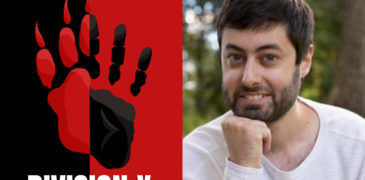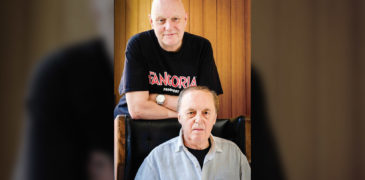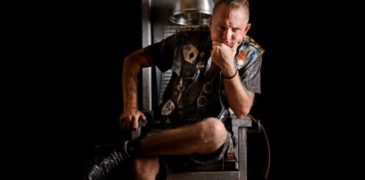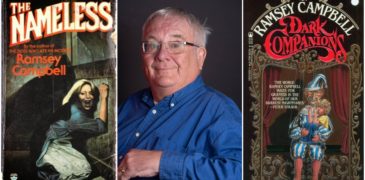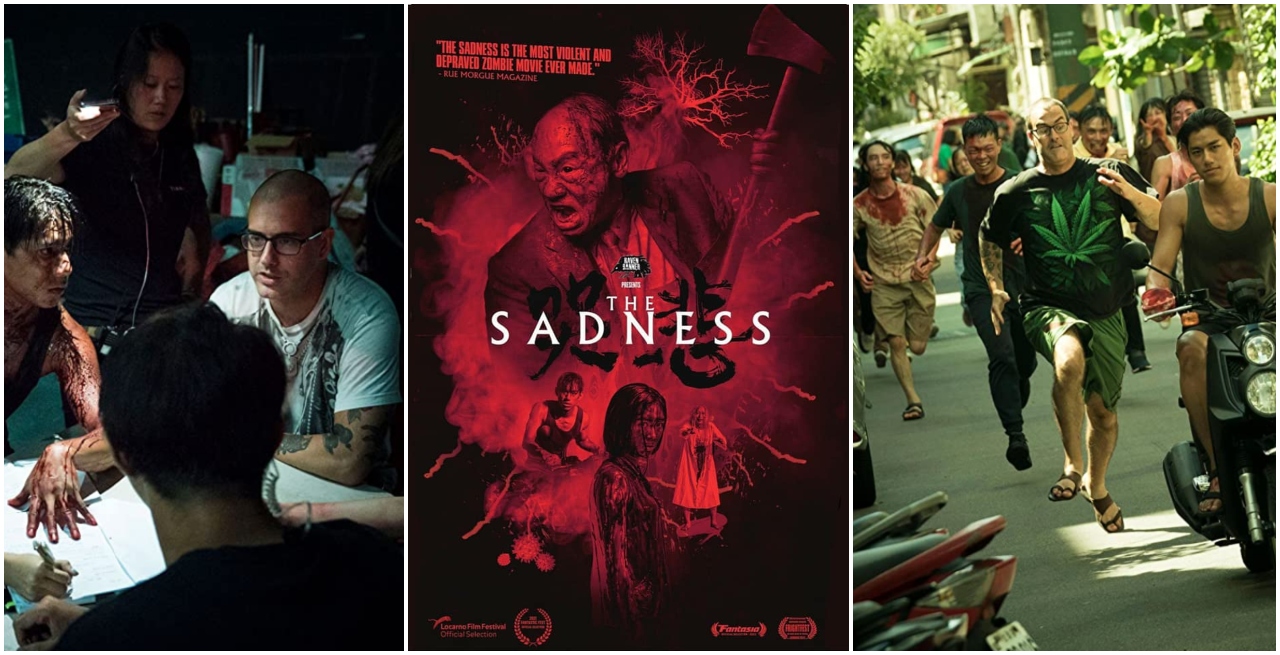
We are happy to present our interview with Rob Jabbaz, director of The Sadness as an incredible debut. The Sadness has achieved all kinds of accolades throughout festival circuits and is easily the most trendy watch of genre festivals in 2021. The film has been praised as a slick production of extreme cinema and notable for the shocked reception of audiences – Fantasia even included a trigger warning for the first time ever. The interview, however, reveals there was a careful balance of the shock value and Rob Jabbaz was appropriately adamant for his first feature film to be impactful (as it was)! Incidentally, our own review at Fantasia awarded the film a 4.5/5 – a fantastic incarnation of mayhem on screen and produced ever so well.
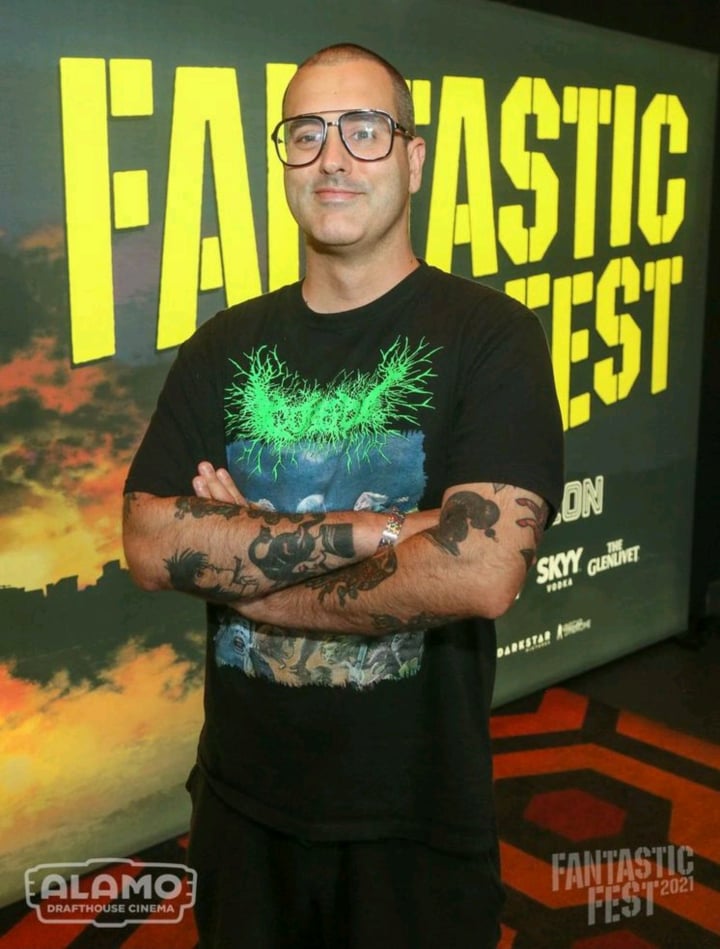
Your marketing for The Sadness originally failed at release in Taiwan. You resorted to festival circuits this time around. How has your experience been at festivals?
RJ: It’s been great – everybody’s been very receptive to the film. I think Raven Banner was very smart in choosing this path: sort of old-school festival buzz. Regarding audience reactions, everybody’s been pretty enthusiastic. I think there’s a lot of people out there who maybe feel there’s a lot missing in horror these days – the teeth are gone, or the bite.
Some people might think there are some films out there which are still button pushing, but the way I feel, if people aren’t really getting angry at the film, buttons aren’t actually being pushed. The Sadness is definitely causing a lot of uproar, which is good.
Do you believe extreme violence is able to have artistic merit and serve a subtext?
RJ: I think you’re just trying to make a scary film. I think a lot of people these days think the “honest” way to build a horror film is to build dread and carefully craft suspense; maybe they think this is the more sophisticated or the artist’s approach. I guess I wanted something more like blunt force trauma – right up front just grab you by the collar and start shaking you. For me, The Sadness is extreme in-your-face, moment to moment terror. It’s not really about building suspense or doing anything terribly artistic.
However, the way it’s presented, like the style and art direction, even the way it has been framed, that’s where the artistry comes from. As for crafting the horror, I try to be as artless as possible, that feels all the more raw, real and shocking to me.
What made you decide, too, to be unrestrained with the level of violence? It was quite bold!
RJ: You said it yourself: it was bold. It was my first feature and in order for me to get attention as a director, and sort of get opportunities, I need to be bold, make loud noise. So, being extreme, cruel and vulgar, these are things which are fairly low cost. I had a limited budget and used what’s available to me to make loud of noise as I could.
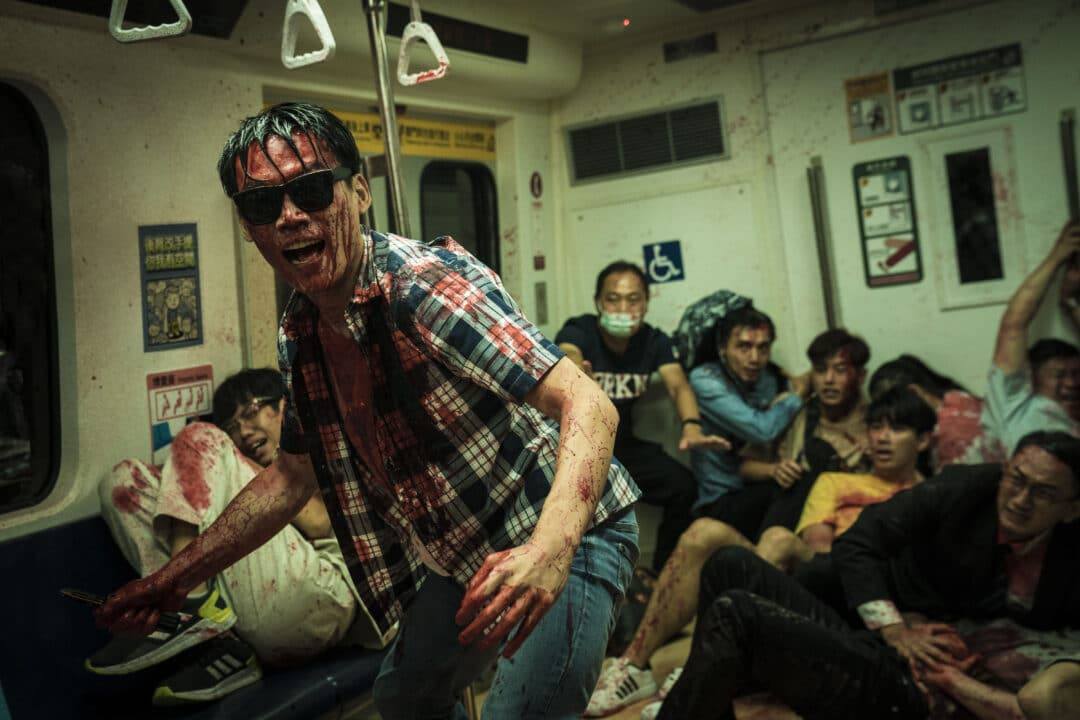
You have noted the Crossed comics as an inspiration, rather gratuitous in violence. What inspired you from this material?
RJ: I think the main thing about Crossed, which I found to be inspiring, was that simply adding malice, or deliberate intent, to a zombie story structure really makes a huge difference. All of a sudden, this sort of tired, goofy genre, which has been beaten to death, has a fiery new life. That was sort of what I took from Crossed: that idea of deliberate intent and malice. Also, the emphasis, too, on gore – that’s something which Crossed has.
I think oftentimes, though, Crossed does play a lot of that stuff for laughs, like as an extremely dark irony. I really wanted to make The Sadness more earnest and take the stuff a little more seriously. I also wanted to not be as gratuitous, they show you a lot of stuff. Whereas in The Sadness, I feel there’s enough sensibility of restraint to not show the more extreme moments such as sexual violence. I did this mostly because I felt it was unnecessary – I can keep the terror but not really rub the audience’s nose in the more terrible things.
Ultimately, I feel that doing too much can harm the film – it can make the audience turn on the film. As a director and filmmaker, your responsibility sometimes, and people may argue with this, is to be in service to the audience, at least to some degree. I didn’t want a film that made the audience turn on it – I wanted them to stay on the side of the film and stay invested. I was merciful, I suppose, but some people may disagree with that as well.
Why did you choose horror to start your career – are you a fan of the genre? If you are indeed a fan, which horror films are your favourite? Any iconic characters, too, from these franchises?
RJ: I really admire the work of Stuart Gordon. I think Castle Freak is a film not enough people have seen. The goofy title is enough to keep a lot of people away. I find that the film is deeply, deeply tragic. The character, Giorgio, in Castle Freak is one of the most sad characters I’ve ever seen in a film. It’s so sad because all he wants is love and warmth, a feeling of acceptance, but he doesn’t even know how to do that. When he tries to do that, he just ends up ripping people to shreds. I could go on and on about Castle Freak, I think that film is amazing.
But, I also do like the sensibilities of Stuart Gordon. In all of his films, you can see a very pragmatic craftsman at work. He takes his work seriously, but he also understand he’s not doing brain surgery or rocket science. He is just making a film that is meant to thrill and titillate – he never loses sight of that. Even his later work, he still has that spirit to it. It’s a real shame we lost him… I hope… I was thinking in the back of my mind… I hope The Sadness is a film he would have watched and enjoyed.
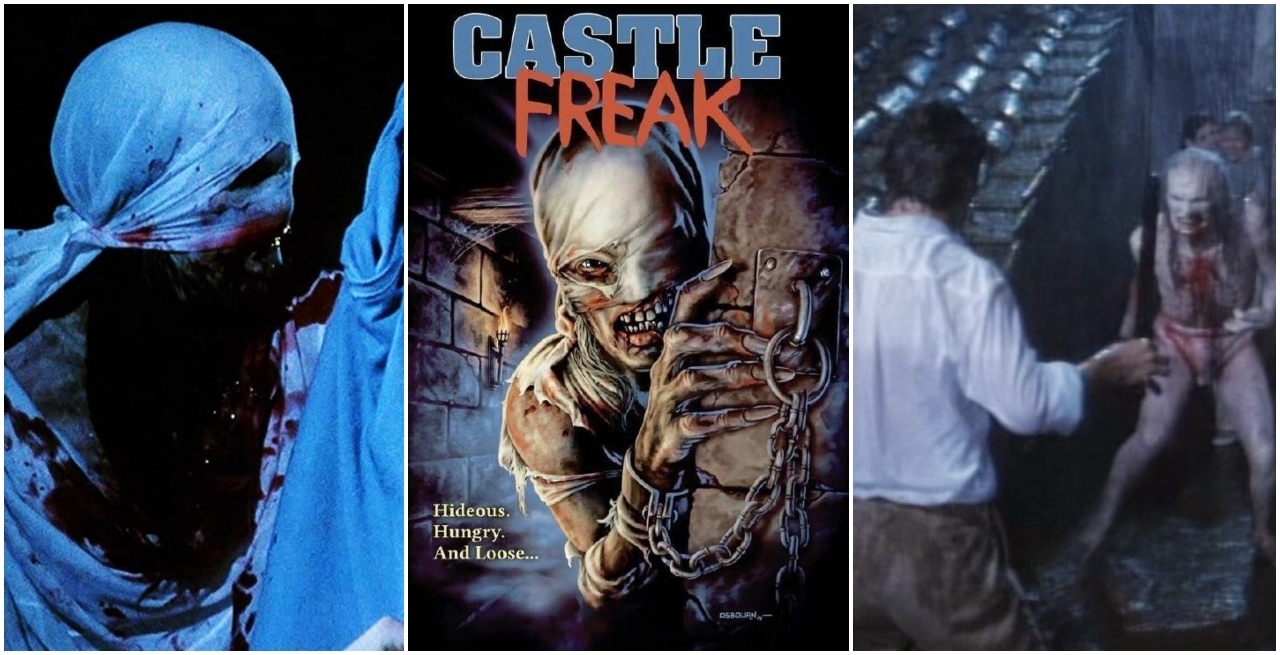
In The Sadness, we have some dilemmas such as the scientist experimenting on the babies. In such shocking scenarios, do you feel we are finally tested with hard choices easily denied in our more ordered society?
RJ: I think one of the things which can be said about The Sadness is that nobody really has any right answers – nobody has a solution to the problem. The scientist at the end, who is framed as being the guy who knows what’s going on, is maybe the ray of hope for Kat’s survival. I tried to crush that… showing that even the cold logic of science is harmful and just as capable at screwing everybody over as with politics or personal bias.
It’s like a game show where they give you a choice of three doors to choose from. They say two doors will have poisonous gas, the third door will have a treasure chest. The joke is that all three will have poisonous gas… Haha!

You have established a universe in ‘The Sadness’, do you think there’s any chance for sequels or other tie-ins? Would you be interested?
RJ: I don’t think I would really want to do a sequel, mostly because I lost the ‘Businessman’ character who’s brilliantly played by Wang Tzu Chiang. I believe he kind of holds the film together and without him, I don’t know if The Sadness would have been nearly as successful. However, if somebody wants to offer me a huge sum of money to direct a sequel, I’m not too good for a cheque. And, the same goes for an American remake- if somebody asked me to do that, I’m not too good for an American remake. I would just need to be paid sufficiently – you only live once.
You have mentioned being inspired from CAT III films of Hong Kong, what kind of movies were the basis for this? What did you enjoy, too, from that specific area? (Note: Misunderstanding)
RJ: I’ve not actually said that, to be honest. That’s something which has kind of been said by festivals and stuff. I think specifically that Fantasia said that – it was their opinion it was similar to a Category III film. I think in Category III films – the ones that everybody talks about like “The Untold Story”, “The Ebola Syndrome”, “Taxi Hunter” and “Run and Kill” – there’s a very strong streak of goofy humour. With The Sadness, I really wanted to make it so the violence was a little more serious and treated responsibly – as something terrible. I don’t think Hong Kong films, like from the 90’s, were a really big influence in terms of film content, but they were in how free they were, unconcerned with ideas of what’s decent or right.
The practical effects are incredible in The Sadness, how important was it to make these real and effective? How do you feel, too, about CGI in contrast?
RJ: As far as the practical effects are concerned in The Sadness, it was absolutely crucial they would be designed very well, a lot of attention was given. I worked with IF SFX ART MAKER from Taiwan to develop the effects, we worked very closely together. Originally, they gave a quote and the studio wanted to undercut them a little bit, but I actually fought to make sure they got what they asked for. So we ended up meeting their quote. I wanted them to feel respected and enthusiastic about the film; I didn’t want them to feel like they were being held over a bucket, or a barrel – whatever the fuck the analogy is.
I am a strong believer that a vast majority of violence and gore in films needs to be done practically, to get that ‘mess’ factor which I believe is really important. There’s also a certain pain factor that can only be achieved with practical effects. I think CG is a very powerful tool, and I am a CG artist myself (you can look at my work on Youtube), but I think for gore specifically, it needs to be done practically. Unless, of course, there’s something that’s just impossible due to the law of physics or you need to keep your actors safe.
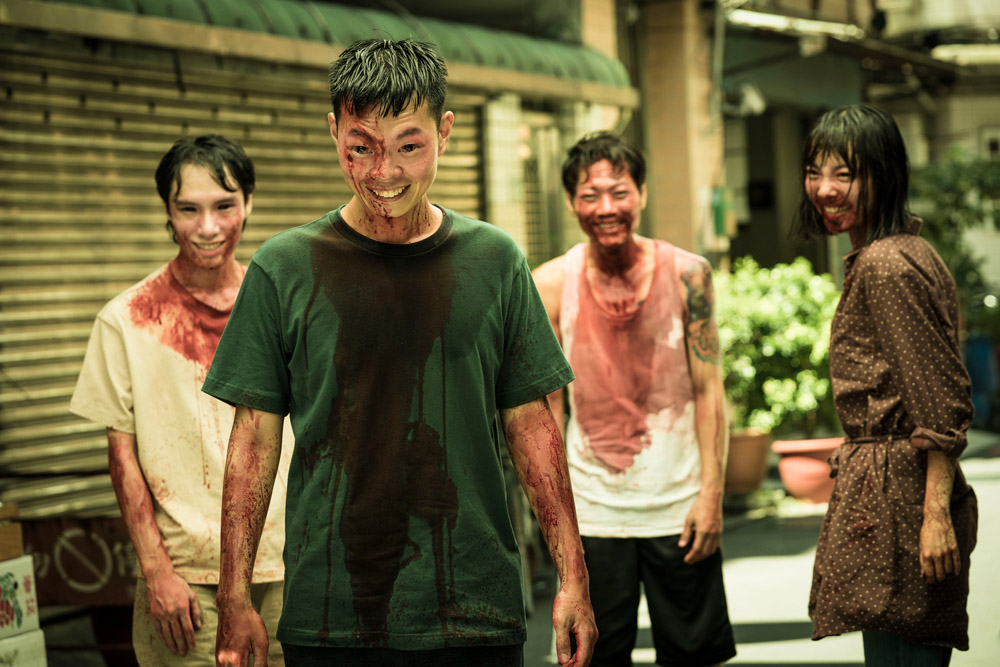
Your film is described as a ‘zombie outbreak’ flick in essence – what are your thoughts on contemporary works such as Romero? South Korean hits, too, such as Train to Busan?
RJ: Let me put it this way- my favorite zombie film is Return of the Living Dead, which is sort of an oddball zombie film. I have respect for the three Romero classics, and I like the Lucio Fulci zombie film – that one film. But, I guess I’m not a huge fan of the contemporary zombie genre, I’m not really into Zombieland. I thought Train to Busan was watchable, but definitely not something I’d put in my top 50 favorite films. Kudos to them, too, for creating something that was such a crossover hit – I guess it was a successful film that tapped into people’s hearts and compelled them enough to go crazy over the world – it was huge worldwide. For me, I like Return of the Living Dead – that’s the one I like because it’s fun and mean.
In The Sadness, there’s definitely a sociopolitical undercurrent. How important are these in a film as a commentary? Did anything from Taiwan, too, motivate these for you in The Sadness?
RJ: Not really, The Sadness is not a very political film on its face, I think a lot of people are bringing their own pandemic related experiences and trauma to the film. It’s like bringing your own crayons to the coloring book. There’s sort of a scene that could be construed as political, but it’s just in service to the horror. The simple idea that the government is supposed to be able to protect us, that it’s their responsibility, but guess what – the government is gone now and we’re on our own. That’s the only politically related message I was trying to get across – just the total uselessness of government in a situation dire enough.
The infamous eye scene was censored with a cut away – is there an explicit version?
RJ: Nope, absolutely not – it was designed right from the beginning to be the way it was. As I explained before, I was very careful about not showing certain things with the concern of having the subject matter turn into a joke or punchline. Similarly, I didn’t want the content to cause the audience to turn on the film. When I say turn on the film, that’s not with people getting angry, but more sort of rolling your eyes at the film – that’s not something I ever wanted to happen. The “infamous eye scene” was structured more to put the idea in your head and make you deal with it yourself as opposed to me rubbing it in your face.
You have the ‘Businessman’ as practically a character himself once ‘Saddened’, he has his own distinct personality. He is brilliant! Did you enjoy defining these more than just faceless zombies in the design and their actions?
RJ: Of course, that was absolutely the point of the film. I like that term you used, ‘Saddened’ – it’s pretty snappy. Once we realised that these would be thinking people, essentially maniacs as opposed to zombies, these can be memorable characters – Villains! You only have so much time with a film and so I put all of my eggs in one basket on my best actor: Wang Tzu Chiang. Once the script was written, we worked together to develop the character and how he would behave. It was a really amazing process doing this with him.
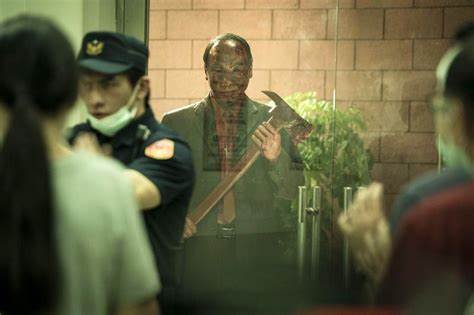
How long until the wider audiences can enjoy The Sadnesss? How have you felt, too, about the reception at large?
RJ: I can’t answer that at this time as I don’t know. The film is currently in the process of being sold and bought, but once you sell it to a buyer, it’s up to them when they release it. Maybe they’ll put it on ice and release it next Halloween, who knows? Normally with these things, you want to strike while the iron is hot and the audience is interested. I could make a guess, but what’s the point. All I know is that it will eventually come out and soon you’ll be able to enjoy The Sadness in the comfort of your home with a bowl of popcorn and sweetheart by your side.
What are your future plans creatively, and do you think you’ll continue with horror?
RJ: I’m going to try and develop a short film I made, called ‘Clearwater‘, into a feature. That’s what I’ve been putting all my chips into at this point. It’s a horror movie, but it doesn’t function the same way as The Sadness does. The whole engine of The Sadness, as I mentioned before, is the cruelty aspect of it – the terror, or the idea, of somebody wanting to hurt you, and it giving them great pleasure to do so. That whole thing is the engine that makes the film operate. So, with the new film, I have to remove that engine and put in a new one. Hopefully, the horror will be just as intense, but it will function differently.
More Interviews
Howdy, GoH fam! Dustin here again with a little exclusive moment. If you’ve seen my review of Division X, y’all know that I absolutely loved the book. If you got… With the launch of the Jan 20 launch of FRIGHTFEST SATURDAY SCARES WITH ALAN JONES on Fast TV channel NYX, Alan recounts his rise to journalistic prominence – from stealing… Dick Dale is an Australian writer/director/producer with a strong focus on video nasties and splatter films. Dick is most notable for directing the short dark comedy Creamy Love (2001) and… A distinguished British horror author, who’s been the recipient of various awards in fiction and considered amongst the most revered veterans of the industry, Ramsey Campbell has established a strong…Interview with August Hill: A Trip to Division X
An Interview with Alan Jones – Famed Film Journalist
Interview with Dick Dale – Director of Ribspreader (2022)
Ramsey Campbell Interview – A Titan of Horror Literature
Some say the countdown begun when the first man spoke, others say it started at the Atomic Age. It’s the Doomsday Clock and we are each a variable to it.
Welcome to Carcosa where Godot lies! Surreality and satire are I.
I put the a(tom)ic into the major bomb. Tom’s the name!
